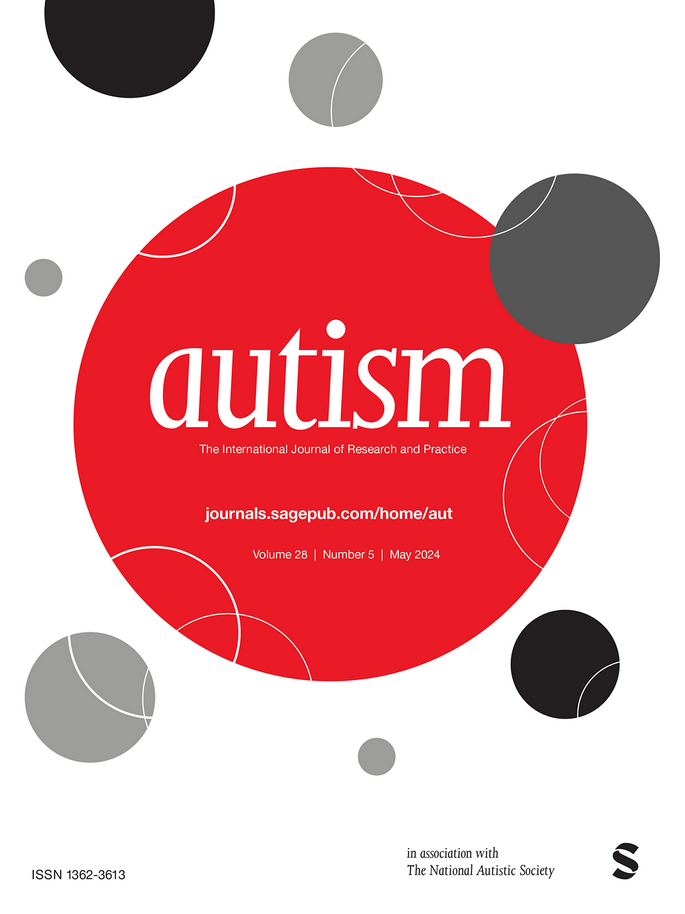“从一群坏人中挑选最好的”:探索利益相关者对自闭症成年人自我伤害评估工具的看法。
摘要
自闭症患者比非自闭症患者有更大的自残风险,但目前还没有专门的工具来评估这一人群的自残。因此,我们对自闭症成人(n = 5)和专业人士(n = 4)进行了两个焦点小组的研究,以考察他们对现有的三种自伤评估工具(非自杀性自伤评估工具、自伤陈述清单和非自杀性自伤问卷)的看法。通过反身性主题分析,我们发现了一个总体主题——“从一堆烂东西中挑出最好的”——参与者承认这些工具的一些优势,但多重限制超过了这些优势。次级主题包括认知方面的考虑(如复杂性、长度、工作记忆需求、内省)、缺失的元素(如更广泛的自残行为、功能、环境、支持)以及概念化自残的挑战,特别是在意向性和刺激方面。与会者还强调了解决耻辱感问题的重要性,考虑到注意力缺陷多动障碍和智力残疾等共同发生的疾病,并坚持照顾义务。总的来说,研究结果表明,现有的自我伤害评估工具不适合或不被自我伤害的自闭症成年人接受,这表明明显需要一种新的与自闭症患者一起开发的自我伤害评估工具。摘要自闭症成人和专业人士对现有自我伤害评估工具的看法自我伤害被定义为某人故意伤害或毒害自己,而不考虑原因。这可能包括自杀企图,以及割伤、殴打或焚烧等行为,作为表达或管理困难情绪的一种方式。值得关注的是,自闭症患者比非自闭症患者更有可能自残,但目前还没有专门设计的工具来评估这一群体的自残行为。这使得研究人员和服务提供者更难识别自残的自闭症患者,并提供正确的支持或治疗。先前的研究表明,现有的三种自我伤害评估工具可以适用于自闭症患者,但尚不清楚自闭症成年人和专业人士对这些工具的看法。我们进行了两个焦点小组:一组是有自残行为的成年自闭症患者,另一组是与有自残行为的自闭症患者打交道的专业人士。两组人都认为这三种工具都不适合自闭症患者。他们解释说,有些问题对自闭症患者来说可能更难回答,比如那些需要他们记住具体细节或识别自己情绪的问题。他们还指出,这些工具错过了自闭症患者经历的重要方面,比如管理感官和社交负担。两个小组都强调自残是复杂的,并讨论了自残与刺激(如重复动作或声音)等行为的重叠。他们强调了对自残采取支持性方法的重要性,这种方法要考虑到共同发生的条件的作用,如注意力缺陷多动障碍(ADHD)或智力残疾,并确保研究人员和专业人员优先考虑参与者的安全。这些发现表明,与其调整现有的工具,不如开发一种专门针对自闭症患者的新工具。量身定制的工具可以帮助更早地识别自我伤害,并为自闭症成年人提供更好的支持。Autistic people are at greater risk of self-harm than non-autistic people, yet no tools exist specifically for assessing self-harm in this population. We therefore conducted two focus groups with autistic adults (n = 5) and professionals (n = 4) to examine their perspectives on three existing self-harm assessment tools (Non-Suicidal Self-Injury - Assessment Tool, Inventory of Statements About Self-Injury and Questionnaire for Non-Suicidal Self-Injury). Using a reflexive thematic analysis, we found one overarching theme - 'picking the best of a bad bunch' - where participants acknowledged some strengths of the tools, but multiple limitations outweighed these. Subthemes included cognitive considerations (e.g. complexity, length, working memory demands, introspection), missing elements (e.g. broader self-harm behaviours, functions, context, support) and challenges in conceptualising self-harm, particularly around intentionality and stimming. Participants also stressed the importance of addressing stigma, considering co-occurring conditions like attention-deficit hyperactivity disorder and intellectual disabilities and upholding a duty of care. Overall, findings show that existing self-harm assessment tools are not appropriate or acceptable for autistic adults who self-harm, indicating a clear need for a new self-harm assessment tool developed with and for autistic people.Lay abstractThe perspectives of autistic adults and professionals on existing self-harm assessment toolsSelf-harm is defined as when someone intentionally hurts or poisons themselves, regardless of the reason. This can include suicide attempts as well as behaviours such as cutting, hitting or burning as a way to express or manage difficult feelings. Concerningly, autistic people are more likely to self-harm than non-autistic people, but there are currently no tools specifically designed to assess self-harm in this group. This makes it harder for researchers and service providers to identify autistic people who self-harm and offer the right support or treatment. Previous studies have suggested that three existing self-harm assessment tools could be adapted for autistic people, but it is unclear what autistic adults and professionals think about these tools. We conducted two focus groups: one with autistic adults who have self-harmed and another with professionals who work with autistic people who self-harm. Both groups felt that none of the three tools were suitable for autistic people. They explained that some questions might be harder for autistic people to answer, such as those requiring them to remember specific details or identify their emotions. They also noted the tools missed out on important aspects of the autistic experience, like managing sensory and social overload. Both groups highlighted that self-harm is complex and discussed the overlap with behaviours such as stimming (e.g. repetitive movements or sounds). They emphasised the importance of a supportive approach to self-harm that considers the role of co-occurring conditions, like attention-deficit hyperactivity disorder (ADHD) or intellectual disabilities, and ensures researchers and professionals prioritise participant safety. These findings suggest that instead of adapting existing tools, a new one should be developed specifically with and for autistic people. A tailored tool could help identify self-harm earlier and lead to better support for autistic adults.

 求助内容:
求助内容: 应助结果提醒方式:
应助结果提醒方式:


